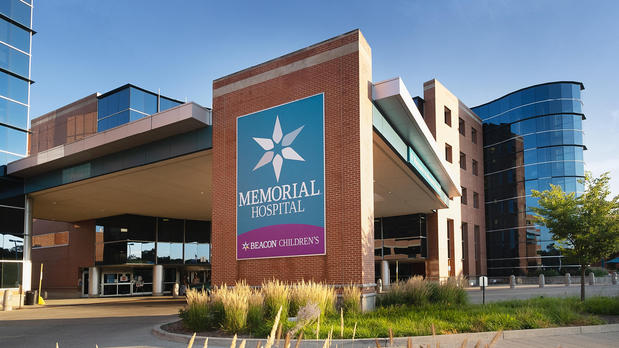Carbon monoxide poisoning
Learn how to prevent poisoning with this gas that has no color, odor or taste.
Overview
Carbon monoxide poisoning occurs when carbon monoxide builds up in the blood. When too much carbon monoxide is in the air, carbon monoxide replaces oxygen in the red blood cells. This can lead to serious tissue damage or even death.
Carbon monoxide is a gas that has no odor, taste or color. It comes from burning fuels, including gasoline, wood, propane or charcoal. Appliances and engines that aren't well vented can cause the carbon monoxide to build up to dangerous levels. A tightly enclosed space makes the buildup worse.
Anyone exposed to carbon monoxide needs to get into fresh air and seek medical care right away. Call 911 or emergency medical services right away for someone who is not conscious or can't respond.
Symptoms
Carbon monoxide poisoning affects the brain and heart the most. Exposure over time might lead to symptoms that can be mistaken for those of the flu without the fever. Clearer symptoms of carbon monoxide poisoning can include:
- Headache.
- Weakness.
- Dizziness.
- Nausea or vomiting.
- Shortness of breath.
- Confusion.
- Blurred vision.
- Sleepiness.
- Loss of muscle control.
- Loss of consciousness.
Symptoms related to the nervous system and brain can come on after recovery from carbon monoxide poisoning. The risk of these is higher in older people and people who lost consciousness from breathing carbon monoxide. Symptoms might include:
- Memory loss.
- Personality changes.
- Movement problems.
Carbon monoxide poisoning can be especially dangerous for people who are asleep or have used illicit drugs, alcohol or medicines that make them very sleepy. Carbon monoxide poisoning can cause brain damage or death before anyone realizes there's a problem.
When to see a doctor
For possible carbon monoxide poisoning, get into fresh air and seek medical care right away.
Causes
Many fuel-burning products and engines make carbon monoxide. In areas with good airflow, the amount of carbon monoxide from these sources most often isn't cause for worry. But if they're used in a partly closed or closed space, the carbon monoxide level can be a danger. Examples are using a charcoal grill indoors or leaving a running car inside a garage.
Breathing the fumes causes carbon monoxide to replace oxygen in the blood. This prevents oxygen from getting to tissues and organs.
Breathing in smoke during a fire also can cause carbon monoxide poisoning. And smoking through a water pipe, called a hookah, has been linked to increasing numbers of younger people getting carbon monoxide poisoning.
Risk factors
Breathing in carbon monoxide can be especially dangerous for:
- Unborn babies, also called fetuses. Fetal blood cells take up carbon monoxide more easily than adult blood cells do.
- Infants and children. Young children take breaths more often than adults do.
- Older adults. Older people who have carbon monoxide poisoning may be more likely to get brain damage.
Complications
Damage from carbon monoxide depends on how much is breathed in and for how long. Carbon monoxide poisoning can cause:
- Brain damage that doesn't heal.
- Damage to the heart, possibly leading to life-threatening heart problems.
- Death.
Prevention
To help prevent carbon monoxide poisoning:
-
Place carbon monoxide detectors in the home. Put them near each sleeping area on every level of the house. Check the batteries at least twice a year at the same time you test smoke detector batteries.
If the alarm sounds, believe it! Leave the house and call 911 or emergency medical help. Carbon monoxide detectors also are made for motor homes and boats.
- Open the garage door before starting the car. Never leave a car running in the garage, especially if the garage is attached to the house. That's true even if the garage door is open.
- Use gas appliances only as intended. Never use a gas stove or oven for heat. Use gas camp stoves outdoors only. Use fuel-burning space heaters only when someone is awake to watch them and when doors or windows are open. Don't run a generator in an enclosed space, such as a basement or garage.
-
Make sure there's space around fuel-burning appliances and engines. These include all gas appliances, space heaters and wood-burning stoves. Make sure they're vented properly.
Have professionals set up all gas-, oil- or coal-burning appliances. Have a qualified service professional check them yearly.
- Keep fireplaces in good condition. Clean the fireplace chimney and flue every year.
- Don't block vents and chimneys during remodeling. Check that they aren't covered by tarps or debris.
- Do repairs before returning to where the poisoning occurred. If carbon monoxide poisoning has occurred in the home, find and repair the source of the carbon monoxide leak before staying there again. Have a qualified service professional check and repair any appliances that might have caused the leak.
Diagnosis
Treatment is likely to start right away for anyone brought to an emergency room with suspected carbon monoxide poisoning. To confirm the diagnosis, the healthcare team might test a blood sample for carbon monoxide. This test should be done as soon as possible after removing the person from the suspected exposure environment. But the test shouldn't delay treatment.
Treatment
In an individual hyperbaric oxygen unit, a person rests inside a clear plastic tube and receives treatment. This chamber also is called a monoplace hyperbaric oxygen chamber.
Hyperbaric oxygen therapy also can be given to more than one person in a large room. In this case, each person gets oxygen through a lightweight, clear hood.
Get into fresh air right away. Call 911 or emergency medical help if you or someone with you has symptoms of carbon monoxide poisoning. These include headache, dizziness, nausea, shortness of breath, weakness and confusion.
At the hospital, treatment may involve:
- Breathing pure oxygen. In the emergency room, standard treatment involves breathing pure oxygen through a mask placed over the nose and mouth. This helps oxygen reach organs and tissues. People who can't breathe on their own might be put on a machine that breathes for them, called a ventilator.
-
Getting treatment in an oxygen chamber. This is called hyperbaric oxygen therapy. It involves breathing pure oxygen in a chamber for a set amount of time. The air pressure inside the chamber is 2 to 3 times higher than the pressure outside. This helps replace carbon monoxide with oxygen in the blood.
Hyperbaric oxygen therapy might be used for severe carbon monoxide poisoning. It helps protect heart and brain tissue from carbon monoxide damage. Hyperbaric oxygen therapy also might be used for pregnant people to protect unborn babies from damage from carbon monoxide poisoning.
Preparing for an appointment
If you or someone you're with has symptoms of carbon monoxide poisoning, get into fresh air immediately and call 911 or emergency medical help. Symptoms can include headache, dizziness, nausea, shortness of breath, weakness and confusion.
The healthcare team at the hospital will likely need information as soon as you arrive. On the way to the hospital, try to prepare answers to questions about:
- Possible sources of carbon monoxide.
- Symptoms and when they started.
- Mental concerns, such as confusion and memory problems.
- Loss of consciousness.
- Other medical conditions, including pregnancy.
- Smoking habits.
© 1998-2025 Mayo Foundation for Medical Education and Research (MFMER). All rights reserved.
Terms of Use




